- Neither Raksha (Protection) nor Bandhan (Commitment)
Yesterday India celebrated Rakshabandhan Dinotsav, which means a brother assures his sister of protection when she ties a bond of relationship. Husbands do not protect their wives or rather they create problems, but they assure protection to their sisters. This is a ridiculous contradiction in the present day society.
Interestingly, most of the Rakhees are made in China, who is ultimate beneficiary of the business out of this sentimental festival. We have reduced every noble moral that should have been practised with meticulous perfection in all seriousness, into a mere ‘ceremony’ along with a sermon of praise to women. Reality is totally different. Women are unsafe in this country which is proud of great culture. Our daughters and sisters are insecure. Gender Gap index shows that we are not doing enough for our sisters.
Gender Gap & Gender inequality
The Mint reported that the gender gap in India has widened to 62.5%, which is largely due to women’s inadequate representation in politics, technical and leadership roles, decrease in women’s labour force participation rate, poor healthcare, lagging female to male literacy ratio, income inequality. (https://www.livemint.com/news/india/how-india-fared-in-global-gender-gap-report-2021-11617726598143.html) The data show that it will take 135.6 years to bridge the gender gap worldwide and the pandemic has impacted women more severely than men.
Report says that in 2021 India has slipped 28 places and has been ranked 140th among 156 nations participating in the rankings. The media analysed that India is the third-worst performer among South Asian countries, with Pakistan and Afghanistan trailing and Bangladesh being at the top. The report states that the country fared the worst in political empowerment, regressing from 23.9% to 9.1%. Its ranking on the health and survival dimension is among the five worst performers. The economic participation and opportunity gap saw a decline of 3% compared to 2020, while on the educational attainment front India is in the 114th position.
These global reports indicate the deficiencies, which the states should take seriously and initiate sincere efforts to correct the system. India dropped four places, from 2018, to take the 112th rank in the World Economic Forum’s Global Gender Gap Index 2019-2020. The Index measures the extent of gender-based gaps in economic participation and opportunity, educational attainment, health and survival, and political empowerment. In the health and survival parameter, India’s performance is dismal, ranking 150th out of 153 countries.Iceland topped the gender parity rankings, redressing 87.7% of the gender gap. India was ranked 112th, having addressed only 66.8% of the gap.
In Gender Gap index (World Economic Forum) 2017, its position is 108th out of 144 countries. It has slipped 21 places in one year compared to the 87th position last year in Gender Gap Index!In the UN Human Development Report’s (2016) Gender Inequality Index, India is at the bottom of the pile at 125th position, out of 159 countries.
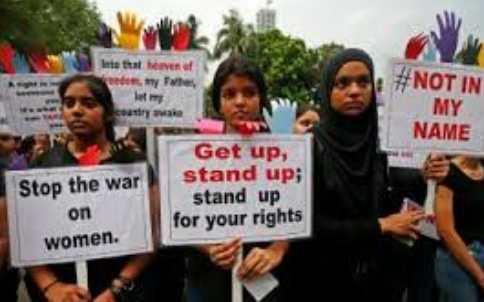
The Indicators for women empowerment are: 1. Women’s security, 2. Decision-making power, 3. Mobility and 4. Above all, courage to complain. In India, and more so for rural India, first three indicators are significantly low.
Surprisingly Courage to complain is less among educated women. Greater the the silence of women more will be violence against them. Silence of mother, wife, daughter or sister is the source of crime or hindrance to action and encourages men to assault.
Right to be born
From birth to death and beyond, women suffer discrimination and difficulties. Everybody has right to be born, but this right is doubtful for women, which depends upon the family preferences. If family is irresponsible a girl’s birth is doubted.
The Pre-Conception and Pre-Natal Diagnostic Techniques (Prohibition of Sex Selection) Act, 2003, commonly called PC-PNDT Act, makes it illegal to determine the sex of the unborn child or even use sex-selection technologies. The frequency of female feticide in India is increasing day by day. Every 50 seconds a girl-child is killed in India. Daughters are aborted, abandoned, buried alive, poisoned, crushed with stones and stifled with a pillow.
The United Nations Population Fund (UNPF) released the State of World Population (SWOP) report titled “Against My Will – Defying The Practices That Harm Women And Girls” on June 30, 2020, emphasizing on this injustice and calling out these “harmful practices rob women and girls of ‘right to reach their full potential’” across the world.
It stated that about 142 million girls went missing globally due to gender-based sex selection (GBSS) in both pre and postnatal sex selection. Out of this, an estimation of 4,60,000 girls went missing at birth in India between 2013-17. https://feminisminindia.com/2020/07/23/missing-girls-india-unfpa-report-2020-latest/
The natural sex ratio is assumed to be between 103 (per 100 men) and 107, and any number above it is considered as suggestive of female feticide. According to the decennial Indian census, the sex ratio in 0 to 6 age group in India has risen from 102.4 males per 100 females in 1961,to 104.2 in 1980, to 107.5 in 2001, to 108.9 in 2011.India ranked second-worst among South Asian and BRICS nations in the sex ratio category.
‘Missing women’ syndrome is caused by sex-selective abortions, female infanticide, and inadequate healthcare and nutrition for female children.Indian Nobel Prize-winning economist Amartya Sen in an essay in The New York Review of Books in 1990, wrote more than 100 million women are missing.
Our cultural mechanisms, so called traditions and values, that vary across countries and even regionally within countries, with inherent bias toward male children is considered to be main cause of ‘missing’ females. The adult women also are missing with female abduction for trafficking in women or sale of woman. We have the phenomenon of missing brides. Excess men mean lack of education and equality for women. It reflects policy deficiency and reduced employment opportunities.
Infant mortality among females
Another risk the children face immediately after birth is the infant mortality. Government has several schemes to prevent infant mortality. For every one lakh births 540 girls die in India. This is the highest maternal mortality rate in the world. It is said India’s infant mortality rate IMR has improved very marginally from 33 per 1,000 live births in 2017 to 32 in 2018, according to the Registrar General of India. India ranks 18th among the highest maternal mortality rates in the world.
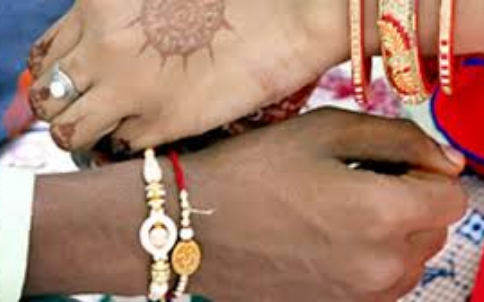
Female infants more likely to survive are calculated to be only five out of 29 states, according to the 2017 Sample Registration Survey (SRS). It is reported that the female infants experienced higher mortality rates than male infants in all states except Chhattisgarh, Delhi, Madhya Pradesh, Tamil Nadu and Uttarakhand, as per the survey.
Child labour or child marriage
Female literacy rate is 65.46% while literacy among male is over 80%. Kerala has the highest female literacy rate. Overall, only 48% of adult Indian women are literate.
While male child surely goes to school, girls’ education is denied for several reasons. Even the childhood is denied with child labour and increasing child marriages. They are either forced to marry or work. Whether at home or at work place, she faces the risk of child sexual abuse, physical violence, and bullying. She suffers from family disputes, marital clashes and character of parents. She has to face eve-teasing in streets, sexual harassment in streets or work places. She is the victim of absence of governance. If married, the domestic violence greets her or faces the wrath of husband’s alcoholism, mother in laws cruelty or harassment from husbands’ sister. 498A rarely protects her. In addition, the dangers of marital rape, Rape, gang rape etc.
Highest anaemia
In 2017, 51 per cent of women aged 14 to 49 were found to be suffering from anaemia in India (the highest in the world) which makes childbirth difficult and dangerous.
It is one of the reasons why the maternal mortality rate is so high in India at 167 per 100,000 live births. We failed to meet the UN Millennium Development Goal in this category.
Girls are withdrawn from schools at puberty if the school is far away and especially when the school does not have a separate toilet for them. That is why the dropout rates for girls are much higher than boys in the middle and secondary levels. Today the level of education of women over 25 years is lower than of men at only 35.3 per cent in the secondary level education.
Female Labour Force Participation low
According to an International LabourOrganisation study, longer term trends suggest that female labour force participation rates (FLFPR) in India have been puzzling. Female participation rates declined from 34.1 percent in 1999-00 to 27.2 percent in 2011-12, and wide gender differences in participation rate also persists.
Despite more women taking up regular work over the years, in 2018, 80 percent of the salaried jobs continued to be held by men, while as many as 80 percent of women who worked, did so in the informal sector.
Thus, despite economic growth, decline in fertility rates of women, and rise in schooling and improved learning outcomes for girls, Female Labour Force Participation (FLFP) levels in India remain alarmingly low, with only one out of every five women of working age in the workforce, according to Soumya. Women’s access to resources, assets and other rights and entitlements also continue to remain low, leading to limited to no impacts on other social development outcomes.https://yourstory.com/herstory/2020/08/gender-research-advocacy-economic-empowerment-women?utm_pageloadtype=scroll
Equality?
She does not have equal rights in parents’ home, will totally depend on husband or his relatives in marital home. If she is widowed her problems multiply, she will be neglected. Even the society including women around do not show an iota of sympathy. In case of old age, the mother is ignored, left and abandoned by her own progeny. As the humanity replaced by the money and materialism the mother is confined to old age home or left on roads.
Physical security
Among rural women, 36.1% have experienced physical violence in their adult lives. 66% of women who have experienced physical violence in their lifetimes are divorced, widowed, or deserted. Lower caste and tribal women are among those who experience the highest levels of physical violence85.3% of women reporting violence claimed that their current husbands were the perpetrators
According to the Demographic and Health Survey analysis, only 43% of currently married women (between ages 15-49) are employed as compared to 99% of men.
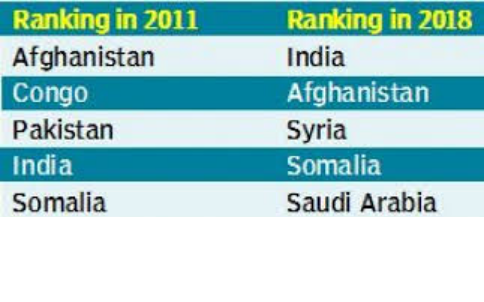
Law for physical security of women
Section 100 of IPC, Right of private defence is amended to empower woman to kill the assailant with intention to cause death, grievous injury, rape, acid attack etc. Non-registration of FIR of sexual assault crime against women is made an offence bypolice punishable.The National Crime Bureau claims that a woman is raped every 29 minutes in Delhi.
Street violence in urban centers is a growing concern for young women and girls, who are increasingly moving away from rural areas for economic opportunities and higher education.
Racial Discrimination, Prostitution
In 2005, according to the North East Support Centre, among the 100,000 people from the northeast living in Delhi 86% had reported racial discrimination and 41% of cases were sexual abuse cases.India is both a source and destination for trafficked women and girls into prostitution and bonded labour.
The Immoral Traffic Prevention Act 1956 (ITPA) is the widely used law to prosecute traffickers, but also is invoked to target prostitution. The anti-prostitution law is seen by many to criminalize and further marginalize women who are in the sex trade.
Women’s rights organizations, activists, and organizations such as the Durbar Mahila Samanway Committee (a nationwide sex workers’ collective) have long supported legalization of the sex trade in India. Asking for changes in the ITPA for better rehabilitation measures for those who have been rescued during brothel and street raids.
Among all indices, India’s rank was the worst in the Health and Survival parameter which is computed in terms of life expectancy for women and sex ratio at birth. India ranked second-worst among South Asian and BRICS nations in the sex ratio category.
Unsafe for women
India, with all its hype about being the fastest growing country in the world, is one of the most unsafe countries for women. Everyday there are reports of violence against women in the news.
The empowerment of women cannot happen without a change of attitude of men towards women but ensuring safety for women is the responsibility of the State.
Is she empowered at home?
Women can be empowered by the economic means and they are on a strong wicket when they bring money to the households.But the recent Family Health Survey reveals that only one fifth of working women have the power to take important decisions in the family. Around 61 per cent women have revealed that in all important matters, both husband and wife take joint decisions. Only 7 per cent of women admitted that it is the husband who makes all the decisions.
They drop out from work to raise families but re-entry is very difficult once the children are grown up. That is why many educated women are not working in India. There are few retraining facilities available for women to re-enter the job market once they have left it.
In agriculture, women are discriminated severely. Even though they do much more work than the average man in the household, her work goes unpaid and unrecognised.
Vrindavan – place of abandoned widows
The status of widows are even worse. The society still treats them in a despicable manner, especially among Hindus. In many cases, they are either abandoned by families or sent to Vindravan or Banaras to live a life of penury. In Vrindavan, there are around 6000 widowed women living on almost no money of their own and depending entirely on charity.
A small pension of Rs 350 per month (which was Rs 200 earlier) is granted to them under the Indira Gandhi National Pension Scheme.
Political reservations
In 1976 the Committee on the Status of Women in India was established and published a report recommending an increase in elected women at the grassroots level, which led to the introduction of the 33.3% reservation at the Panchayat level in 1988.It was only in 1993 that an amendment in the constitution made the proposed reservation at the Panchayat (village level governing councils) a reality. A survey conducted in 2008 yielded that women made up close to 50% of all the village councils across the India.

The Women’s Bill in April 2010, which gives 33.3% reservation for women in all levels of Indian politics, took 14 years after its introduction to finally pass by the Rajya Sabha (the upper house of parliament). It is yet to be passed by the Lok Sabha.
The legal change
The question is who can bring change in their life? Do we need to change the law? A vibrant women’s movement in the last 50 years led to formulation of policies to advance human rights for women in India which are substantial and forward-thinking,
The Protection of Women from Domestic Violence Act (2005), and the 73rd and 74th Amendments to the Constitution that provide reservations for women to enter politics at the Panchayat level are major changes in the life of women in India, which is system-based reform to reduce the disparity.
All laws shall and will apply to women equally. There is no separate law for women. Every law is equally applicable to women. General Clauses Act says, wherever ‘man’ is used in Act, it is deemed that ‘woman’ is included in it and vice-e-versa.
The reservation of 33 per cent seats for women in the Parliament is also something that has been proposed and rejected many times. India has only 12.2 per cent women in the Parliament.
In panchayats, however, women got reserved seats in 1993, which is a milestone in the history of our rural development. Now the reservation is likely to go up to 50 per cent. Pakistan has made reservation for women a law and there are 60 seats out 342 seats in Pakistan National assembly or lower house and 137 reserved seats in 4 provincial Assemblies.
Real empowerment is:
Expression ‘empowerment’ is used frequently by policy makers, professionals, and academics; There is little clarity as to how it can be achieved.It has to be used with a clear sense and practical terms.
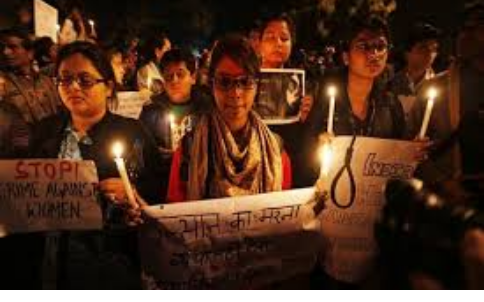
Jayshree Sengupta says: Women gained empowerment in many countries, especially in the Scandinavian nations, if they work and have economic independence, exercise control over their reproductive health, have a strong voice in family matters, and have proportionate representation in politics. https://www.orfonline.org/expert-speak/empowering-women-in-india-a-great-challenge-for-govt-as-well-as-society/
The main causes of the problem:
Lack of awareness; Most of the men or women, do not know rights and duties. Men also should be educated about rights of women.
Fear: Neither reporting or nor complaining the child sexual abuse, physical violence, sexual harassment or domestic violence, even the incidents of rape.
Pressures against complaining. There are pressures not to complain then to withdraw. Many difficulties in pursuing the cases. A small and temporary woman employee suffered torture and pressures because she complained sexual harassment by the former Chief Justice of India. Her telephone along with five relatives were under Pegasus surveillance.
Absence of good governance, and inefficient mechanisms of receiving and acting on complaints is the cause of concern. If the cases reach courts, the main difficulty is delay in dispensation of justice. The number of public representatives with serious charges of offences against women are increasing. They are threat to law making and implementation to protect women.
Abdication of responsibility by legal authorities. Police, prosecutors, Government authorities, courts and other responsible officers if abdicate their responsibilities, the victims get further victimised.
All girls should be educated. Awareness of the rights should be created.The associations and NGOs should play a major role. People especially women should question the injustice.
Silence should be broken.The best fundamental right we all have is the Right to Speak, which has to be used. In spite of threats, false cases, risk of attack, women are still need to BREAK SILENCE, SPEAK, COMPLAIN, QUESTION AND CHALLENGE.



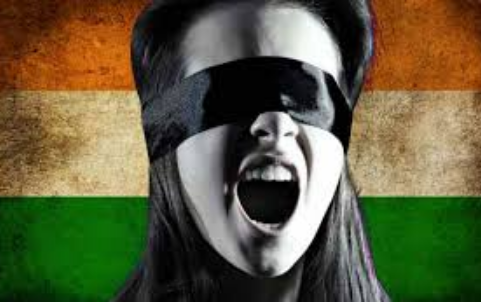

A good ,useful article and data thanks to Sri. Madabhusi